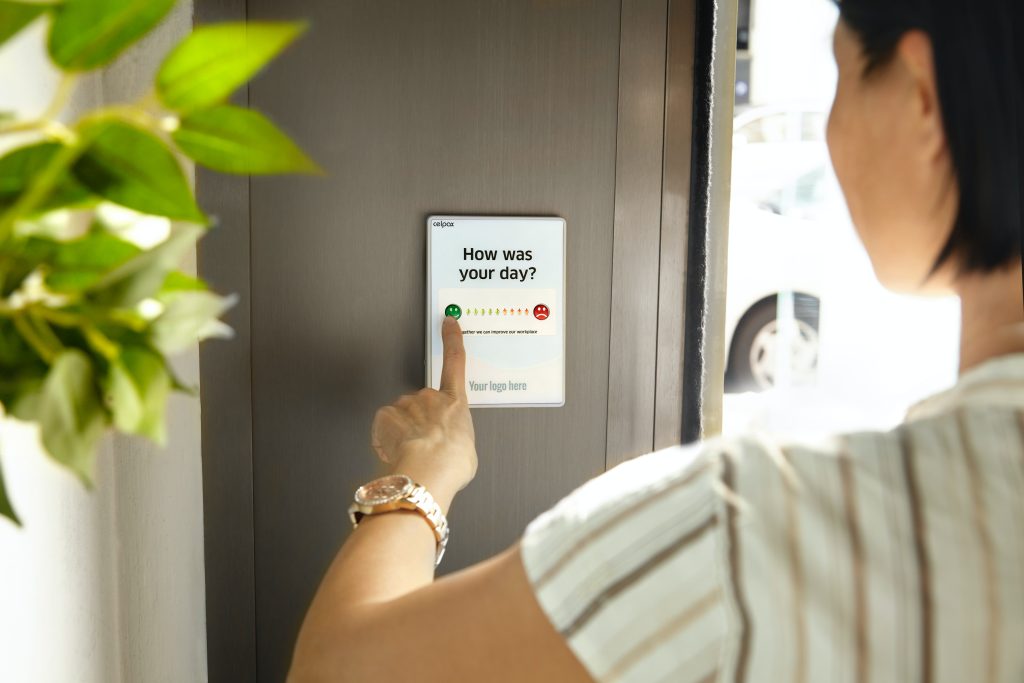
Have you ever wondered how some people manage to travel indefinitely? How do some people fund their travels? What work do these people do?
For some time, I wondered the same. Finally, last year, I decided to take the plunge and test out eight methods to fund my travels.
The methods I chose to test are location flexible and can be performed from literally anywhere in the world.
The purpose of this experiment was to find out what work can one do to become a digital nomad in 2022?
There are still many ways to fund your travels and become a digital nomad in 2022. Out of everything available out there, these are the EIGHT methods I picked and tested and can therefore have an opinion on. This list is by no means exhaustive, and one can always add more methods and adapt my list based on their needs and goals.
Spoiler alert: you will not become an overnight billionaire by using any of the methods listed below. Nor you will become an internet sensation. These methods might not even be the first go-to option people would consider to fund their travels.
However, what these methods can do for you is give you ideas of how to earn an income while travelling. This way, you can stay longer on the road and even become a digital nomad for a while should you wish to consider this route.
If you are interested in long-term travelling, you might find interesting this blog post:
How much money does it cost to visit the most beautiful places on Earth?
1. Remote full-time job

The first method I would like to refer to is a remote full-time job. We should be grateful to the 2020 pandemic for at least one positive change.
Some jobs have now become fully remote, and there are fewer chances than ever to go back to the old way of working (at least for some sectors).
This was also my case when back in March 2020, my company decided we would switch to remote work indefinitely.
Perhaps it was easier in my company because we were already working 1 to 2 days from home. Nevertheless, switching to 5 days of working from home was a significant change for everyone in the team.
Fast forward to 2022, I am one of the lucky people who can still work remotely, meaning that I did test out what it is like to work remotely from different locations around Europe (for now).
Remote work is one of the perks that come with my job. And I truly appreciate the company’s flexibility. I am also aware that every industry is different, and not everyone can benefit from it.
Therefore, it is a bonus if you can convince your manager to let you work remotely. This way, you have a stable income that can fund your travels for months at a time.
I have worked remotely since 2020 now, and I did have time to build some experience and put together a list of pros & cons of this type of work. This list might come in handy for those considering trying out remote work. Hopefully, it can give an idea of what to expect from a fully remote job.
Pros
- One of the biggest pros of this working style is that you are location flexible. What does this mean? It means that you can work pretty much from anywhere in the world while enjoying the beauty of slow travelling.
- The second advantage of remote work is that you have a monthly income you can rely on. Most people do not plan long-term travels because they cannot afford them. However, receiving a monthly income while travelling makes a huge difference because you can cover your expenses abroad the same way you would back home. Sometimes, it might even be cheaper to live abroad, than living in your home country.
- Another advantage remote work has is that you can practice something called slow travelling. Most people only have a by-annually two week holiday. However, two weeks is not enough to get to know a new country.
If you are like me and are interested in the cultural side of travelling, you probably noticed that during a two week holiday you barely scratch the surface when it comes to discovering a new culture.
To get to know the country you visit, understand the culture, and mingle with its people, you need more time, which traditional holidays cannot offer. That’s why remote work and slow travel go hand in hand.
By working remotely, you can spend months at a time in one location. You can get to know the people and even forge friendships and establish new connections. This is something you can barely achieve in a 2-week holiday.

Remote work is not all roses. In my two years of remote work, I discovered the ugly side of remote work that I would like to mention.
Cons
- No matter how many benefits a remote job has, there are also disadvantages. One of them can be feeling alienated from the team.
Even if you spend hours every week with your colleagues on zoom/teams meetings, this does not replace physical interaction. At least, this is how it was in my case. What can you do? Find out if there are any digital nomad communities in your host country and join them. Join local Facebook groups and meet up groups. Find out if there are any co-working spaces and ask if you can join.
- Depending on where you decide to call home for some time, you might be in a different timezone than your company’s. It is wonderful if your company does not mind working at any time. Mine, however, and probably many others, does expect me to be online during UK working hours. This means that if I relocated to Mexico, there would be a 6h difference, meaning I would need to wake up at crazy times to be online during my company’s working hours.
If you are in the same situation, you can always move to countries where the time zone difference is not significantly higher. Personally, up to 3h difference is manageable. Everything beyond that becomes a bit of a struggle.
- Once you become a nomad, you won’t have a fixed address, making it difficult to receive the post. Thankfully, except for parcels, you can opt nowadays to receive most correspondence in the form of an email. However, this comes with limitations. Some delivery services might not be available everywhere (e.g., Amazon does not deliver in some countries etc.).
These are some of the pros and cons I came across since working remotely. There are many more, and each person’s experience is slightly different.
*Please note that I will not touch upon the legal aspects of remote work, taxes or any other legal matters. Each case is unique, and each company’s policy on remote work is different. Therefore, before considering this working path is always good to discuss it with your line manager and probably the HR department.
2. Start a business (Ideally an online business)

Starting a business is easier said than done. However, working on your project is a great opportunity to gain freedom and be able to travel long term (if this is your final goal).
Starting a business nowadays can mean anything. It can mean setting up a website, an e-commerce business, a YouTube channel, or even opening a small shop. Your options are limitless.
Depending on the type of business you decide to start, you will need different resources. Some business models require a significant amount of cash to set everything up (e.g. opening a physical shop). Other business models require a lot of work and effort upfront without spending too much money at the beginning (e.g. starting a website). It is up to you which of these business models you choose.
I was not eager to start a project and invest that much money upfront without being sure what it could turn into. Therefore I chose to work on this website. Launching a website is significantly cheaper than opening a physical shop. With £100-£150 you can purchase a 3y hosting service and sometimes you even get the domain name included in the cost. The hosting package I bought, included the domain name free of charge for the 1st year.
Assuming things would not work out, at least, I would have not wasted that much money.
Deciding how much to invest in a new project is a decision only you can take. We have different risk tolerance levels, and while I might not be ready to take the risk, you might be happy to jump all in.
Nevertheless, starting & running a business that brings in income could be your ticket to freedom and your big chance to fund your travels for a long time.
After running a website for one year now, I realised the potential of this business model. There is always more to learn and improve. However, I think that being consistent and working on your business model (whichever that is) can lead to success & freedom to travel.
If you think you need to spend lots of money on online courses to start a business, let me tell you there are so many free ways to learn. I used Facebook Groups and Youtube to learn everything I know about websites and blogging.
Some of the (free) resources I used to learn everything I know (so far) are:
–Income School: Youtube channel. In my opinion, they are one of the best out there when it comes to understanding the basics of blogging and websites building. You can use their tips for any website you decide to build.
–Passive Income Geek: Youtube channel. Similar to Income school, Passive Income Geek provides valuable blogging tips.
–Becoming a Blogger: Facebook Group. I find Facebook groups extremely valuable when you have smaller queries you cannot find a Youtube video about. You can always use Facebook groups to get the answers you need.
–Travel Blogging Success: Facebook Group. This group is a good resource if you are looking into building a travel blog. Plenty of tips on this niche. The admin also runs frequent live training which I found very useful.

Online business versus A physical Business. Main Pros & Cons
While an online business is easier to run because you can work on it from your laptop, so truly from anywhere in the world as long as you have Wi-Fi connexion, a more traditional business model can be a little more challenging to manage. However, it is not impossible.
The difference between the two is that with the traditional business, you might have to consider hiring an assistant, someone you can delegate tasks to when you are not around. You do not necessarily need an assistant for an online business (unless it becomes so busy that you can’t do everything by yourself).
Growing a business takes time, and things will not happen overnight. However, once you start generating income, you can use it to fund your travels. Therefore, starting a business is something some of you can consider as a way to fund your long term travels.
3. Freelance work
Freelancing is an excellent way to travel while getting paid for your skills.
While some freelance work might require your physical presence to perform the job, most freelance projects are nowadays 100% remote.
There are no limitations when it comes to freelance work. You simply need to identify what skill sets you have and how can you monetize them (is there a demand for them?).
From what I found online, the skill sets in demand include writing, editing, transcription, voice recording, website design/building, sales, tutoring/teaching, marketing, translation, admin/PA and even consulting (of any kind).
Even the traditional office roles like project management/coordination/admin are now online, meaning that people with office experience should have better chances of finding freelance work in a similar online role.
Where to look for freelance work?

Many platforms advertise freelance work, the most popular ones being Fiver and Upwork.
However, what worked in my case was joining as many relevant Facebook groups as possible. That’s how I found my first freelance project.
Be aware of the many scammers out there, especially online. Before you start working for any company, make sure you understand their T&C and are happy with it.
As a freelancer, you can work for any company in the world (at least in theory). Make sure you have checked the company thoroughly before doing any work from them. The worse that can happen is that they won’t pay you and disappear. And you do not want to waste your time on a scammer.
A few Facebook groups for freelancers I’m also a member of include:
–Digital Nomad Jobs: Remote Job Opportunities
Many other platforms offer freelance work.
Tip: As a freelancer, you usually get paid by the hour. The hourly rate is not usually regulated by any official body. It can get as low as a few US dollars to hundreds of US dollars per hour (generally, companies pay their freelancers in US dollars). Therefore, I believe it is essential to know your worth. Set up an hourly rate and do not go below that.
Also, take on freelance work that can teach you new skills. The more you know, the more flexible you are with the freelance projects you decide to take on. Learning new skills that are in high demand can bring you more income. And more income means you can fund your travels for a long(er) time.
4. Investing in the stock market
In the first instance, investing in the stock market may not be linked to travelling. However, investing and generating passive income from dividend-paying stocks & ETFs can be a good method to fund your travels.
Once you have a defined investment strategy, dividend-paying stocks & ETFs are excellent passive income that requires minimum work to run & maintain.
There are a few caveats to this method that I have summarised below:
-Although nowadays everyone can start investing in the stock market with as little as a few pounds, you do need quite a significant amount of money to generate some good passive income from your stock investments.
To give you an idea of how much you need to invest to generate some passive income, let’s have a look at the next scenario: (I’ll use the British Pound (£) because this is the currency I am used to the most).
Let’s say you decide to move to Uruguay and need a budget of around £1500 to live comfortably. To generate £1500 a month exclusively from your investments in the stock market, you will need an £18,000 yearly income. We will assume you will get your income from a dividend-paying ETF. We will ignore any ETF growth, inflation, tax you might need to pay etc.
We will assume you invest in an ETF that pays 4% annual dividends. You will need to have invested around £450,000 into this fund to generate the £18,000 yearly income you need to support your lifestyle in Uruguay.
While this figure can be astronomical for some people, they are ways to achieve it. And the FIRE community talks lengthily about it on Youtube.

Most Fire community members are passionate travellers who use their stock market income to travel the world. Their stories can be inspirational for anyone looking for ideas on how to fund their long-term travels.
Another caveat I want to mention is that dividends are sometimes cut without much notice in advance (especially during a turbulent economic crisis). Again, this is something the Fire community talks about extensively, including what platforms you can use to invest, the so-called FIRE number, types of tax-efficient accounts you can use to invest etc.
Despite some caveats, investing in the stock market proved to be a smart way for some travellers to fund their adventures.
Investing might not be for everyone as it requires lots of research, working on defining your investment strategy, having an interest in the stock market and much more. However, it can be an excellent tool for generating passive income once you have everything in place.
5. Pet sitting
If you like animals, pet sitting can be the ideal way to slow travel & save up money.
At first, you can start locally, in your hometown, and then apply for international pet sitting jobs. At least, this is how I started.
Sometimes, the difference between pet sitting in your local area/country etc., and international pet sitting is that while the first option is usually paid (although you can choose to do it voluntarily too), the second one is mostly unpaid.
Applying for unpaid pet sitting projects does have its benefits too. You do not pay for accommodation, you usually end up in a tourist area, and sometimes the owners even provide food. I would not mind not getting paid if I were to spend over a month in beautiful Florence looking after some pets and taking the time to discover the city at my pace.
Pet sitting might sound stress-free, but it does come with plenty of responsibility. You need to be aware that you care for an animal who in most cases, is the family’s most important member (after the kids).

How do you start pet sitting?
Typically, a pet sitter would sign up with a platform to land their first pet sitting experience. There are plenty of platforms that run this type of service.
While some might be free, others might request a yearly membership fee (that’s not very expensive considering how much you could potentially save up by not having to pay for accommodation).
The pet-sitting platforms I have used so far to build up a strong profile and gather feedback from my clients are Rover and Catinaflat.
At the moment of writing this blog post, Rover even offers a £15 welcome bonus to those using the link I provide. I wished I had used an affiliate link when I created my profile back in the day. *Make sure you fully read and understand their T&C before joining the platform.
While Rover claims to be an international platform, I have only used it to land pet sitting jobs in the UK. The way the platform works is that you can set up a price for services you can offer and get paid for your work. Catinaflat works in the same way, the only difference being that with catinaflat you can only look after cats. Both platforms are free to join.
After using both platforms for several months now, Rover has brought in more clients than Catinaflat. This might be down to the fact that not many people use Catinaflat. Either way, thanks to pet sitting, I got to live in some pretty places in this part of the UK. So for me, pet sitting has been a win-win situation so far.
Some other places you can try to find new clients are the good, old Facebook Groups. Based on my experience so far, using a platform is more reliable. I got more requests through platforms than on Facebook groups.
Also, on Facebook groups, you need to market yourself and be in constant search for new clients, whereas on dedicated platforms, potential clients will reach out to you. You do not need to market yourself at all, except for making sure you provide some pictures of yourself and ideally some pets and a good description of the services you can provide.
In case you are interested, the Facebook Groups I’m a member of are:
World Wide House Sitting and Pet Sitting Community
What to look for before joining pet sitting platforms?
Before signing up with any pet sitting platform, you must understand what support is available for you. Will you be insured? Do they have any other support in place in case things do not happen as planned? Make sure you understood their T&C before paying the membership fee (if there is one).
If you are new to pet sitting, you might find useful this blog post:
A simple guide for travellers considering pet sitting for the first time
One final thing I would like to add here. Pet sitting can be a good resource to travel in some parts of the world. However, there are some countries where pet sitting is less popular.
In my experience, pet sitting is very popular in the UK, US, Australia, NZ and Europe. There seem to be fewer opportunities in Latin America or Africa for example. Keep this in mind when trying to land your first pet sitting job.
All in all, pet sitting can be a rewarding experience. You get to meet different people, live in new places & look after some lovely pets. At the same time, pet sitting is an excellent method to fund your travels and ultimately stay on the road for longer.
6. Online surveys
While completing online surveys might not be the best cost-efficient way to make money online, it is still one of the most basic ways to generate some income online with 0 experience.
Similar to pet sitting or freelance projects, when it comes to online surveys, there are thousands of websites out there. Take your time to test out a few survey websites before deciding which ones you will choose.
I tested out quite a few survey websites before I settled for even fewer because the money I was making (with some of them) did not worth the effort I was putting in.
Nevertheless, some survey websites are interesting.

I particularly enjoy those that require a conversation/interview with a researcher (the meeting is usually conducted via zoom/google hangouts/ teams etc.).
However, if you are camera-shy, you can always opt for filling in regular surveys. In case you are interested, these are some of the survey websites I currently use and can confirm they pay:
*Useful tip. Most survey websites will only pay you via PayPal. So make sure you have an account with PayPal if they do not accept regular bank transfers.
Extra Tip! Getting paid for walking
Did you know there are apps out there that reword people for walking?
A mobile App I started using recently called WeWard does this. I have already accumulated some pennies from my daily walks. You can use my referral code CARM-SYxjQ to get the welcome bonus. I will also receive something. I think it is a fun way to get rewarded for something you do anyway. And it can surely help travellers who tend to walk quite a lot.
Going back to filling in surveys. While it might not fund your plane ticket to Australia, filling in surveys can contribute towards a meal (or a few depending on where you order it). The most I earned in a month from surveys was £42. I could have probably earned more, but I did not have time to do more surveys.
Despite being less lucrative, I would still recommend looking into filling in surveys because there are no time constraints, you need 0 knowledge to do it, and you can work on it on your phone or laptop from anywhere in the world.
7. Mobility Programmes (in Europe)
Travelling through mobility programmes is one of the best things to do in Europe. Although mobility programmes usually target younger people & students, there are quite a few programmes accepting everyone regardless of their age.
Using mobility programmes in Europe is a smart way to travel and learn at the same time.
Before applying for any mobility programme, make sure you understand the eligibility requirements to increase your chances of getting accepted.
Thanks to EU funded programmes, I lived & travelled to Spain, France, Malta, Belgium, Turkey, Portugal & the UK. If you want to learn more about my experience with mobility programmes, I wrote a blog post about EU mobility programmes:
How to travel in Europe with mobility programmes?
EU Mobility Programmes are great for travelling in Europe. They can help people on a tight budget visit a new country without spending hardly any money.

A big downside
Getting accepted by any mobility programme might not be that easy. Sometimes it takes months to prepare all the documentation and get accepted. On top of that, most EU mobility programmes only accept EU citizens and/or EU residents.
However, EU mobility programmes are useful when you want to learn new skills, pick up a new language and live in a place for longer. Furthermore, mobility programmes are usually fully funded and do not have any participation fee. This is excellent because it allows people who do not afford to travel to go out there and discover a new European country.
8. Rental Income
Generating rental income might not be everyone’s cup of tea. And most digital nomads decide to sell their belongings (including properties) to fund their travels. However, if you own a property you can rent it out and use the rental income to fund your travels.
It is up to you if you want to hire a company/an individual to oversee everything on your behalf or if you are OK managing everything by yourself.
However, you must be aware that tenants might leave while you are away. In this case, you might need someone on the ground to deal with all this.

You won’t need anyone to manage bills, taxes etc. because you can pay everything online these days.
Using rental income to fund your travels might require more effort from your side. However, it can be quite a reliable income source if you manage to find long-term tenants.
Final thoughts
While some suggestions on this list might seem unrelated to the travel world, they can be excellent income sources to fund your travels.
Something I want to highlight is that you do not have to work on all these methods at once (as it might be unpractical).
You may choose to combine some of them so that they generate the income you need to fund your travel plans. You can pet sit to cut down on your accommodation costs while freelancing. Or work full-time remotely while travelling the world. At least this is the strategy I use. I also like to keep some of these methods as backup options in case I lose one of my current revenue streams.
Whatever combination you choose, make sure you do not spend most of your time working. The idea is to work and travel at the same time. Thus, you need to find a balance.
Finding the balance between work and travel can be the most challenging thing. However, once you find it, nothing can stop you from chasing your travel dreams and funding your long-term travel adventures.
*The pictures used in this blog post have been downloaded from Unsplash.
*Some of the links I shared in this blog post are affiliate links. If you sign up using my links, I will receive some extras as well. It is up to you if you want to use my links or sign up with the platforms I recommend separately.

Yes sure, all what you say I agree with it
Hi,
I am glad you agree with it.
Thanks,
Mina
great content, thanks for sharing
thank you very much!